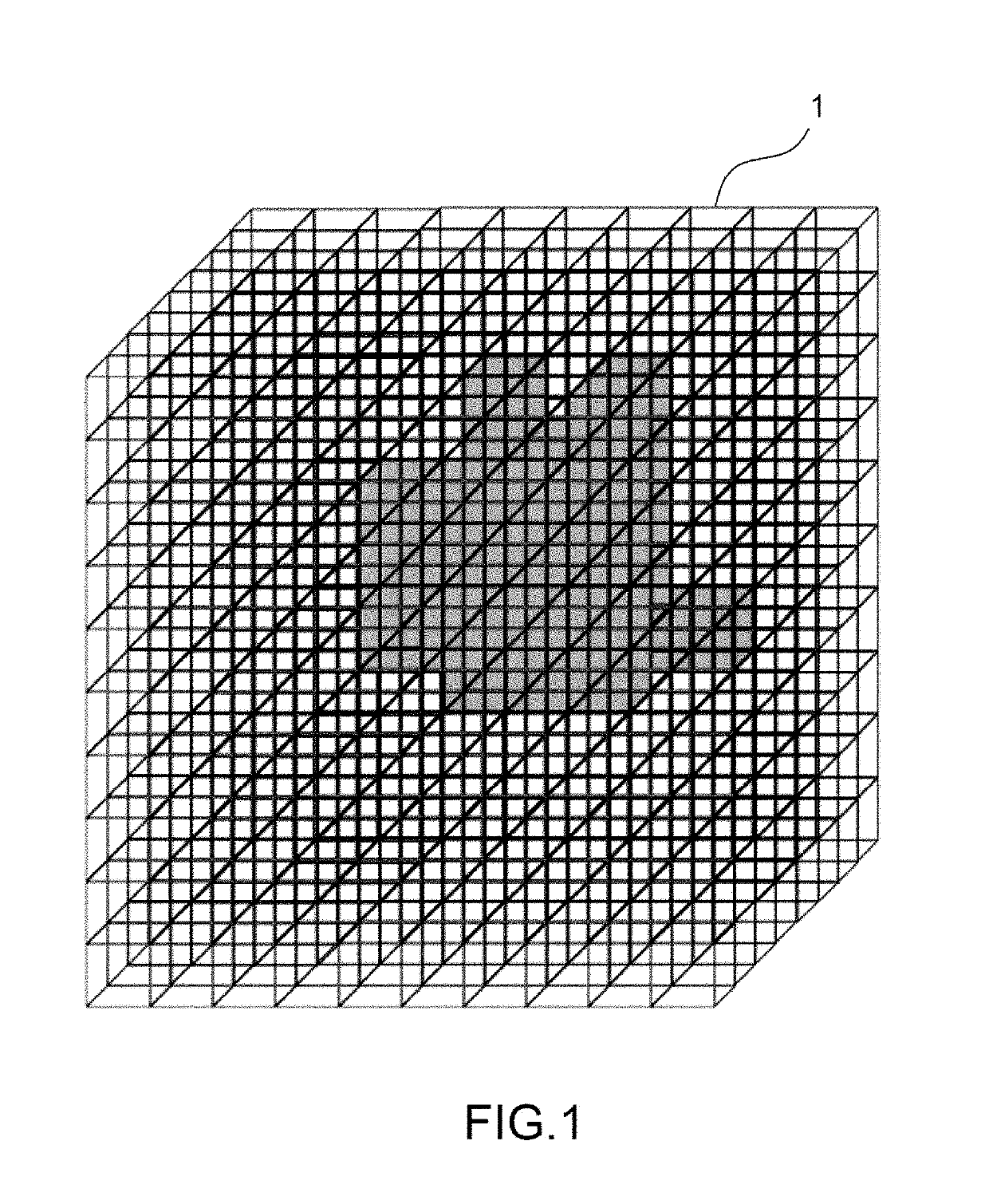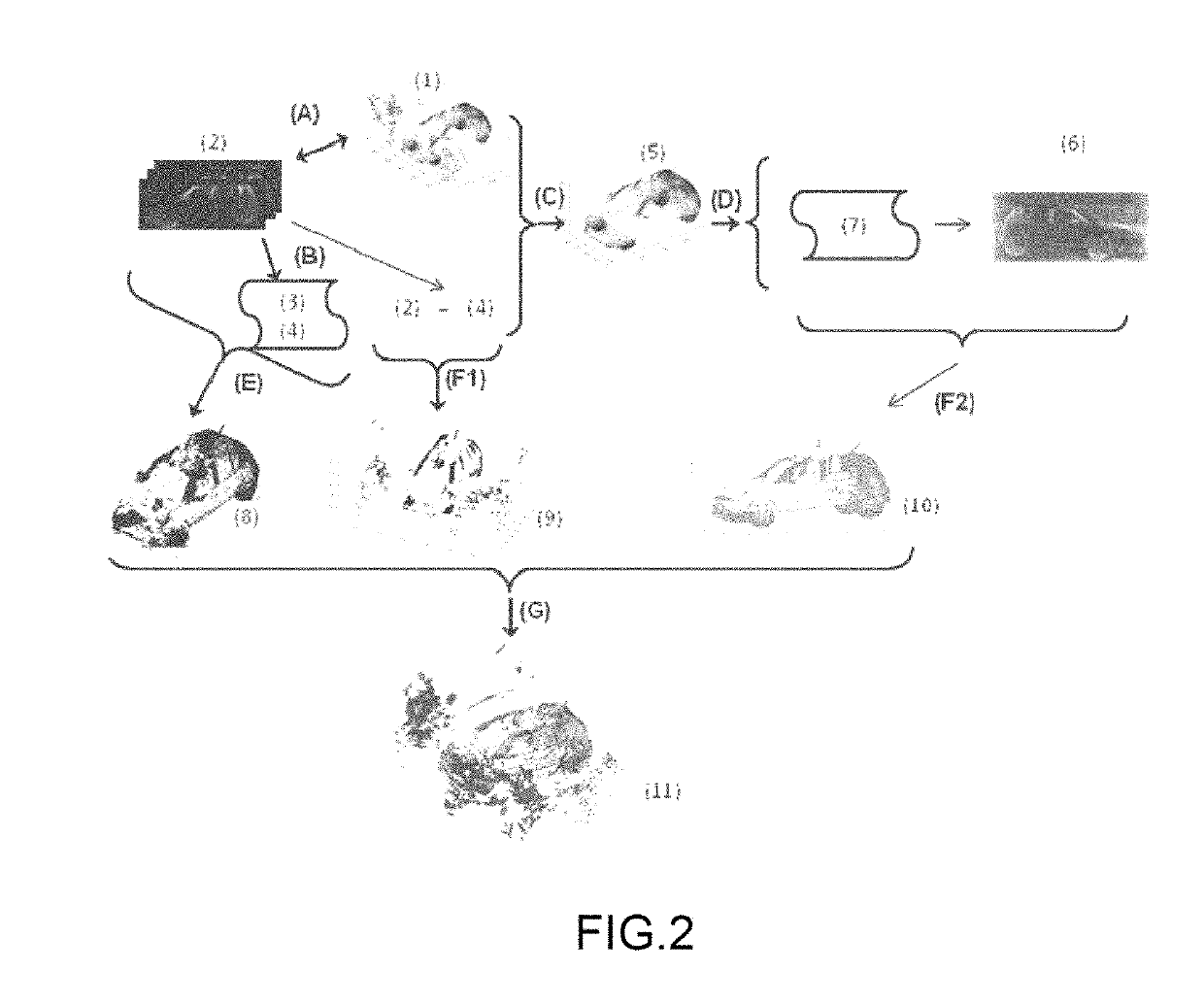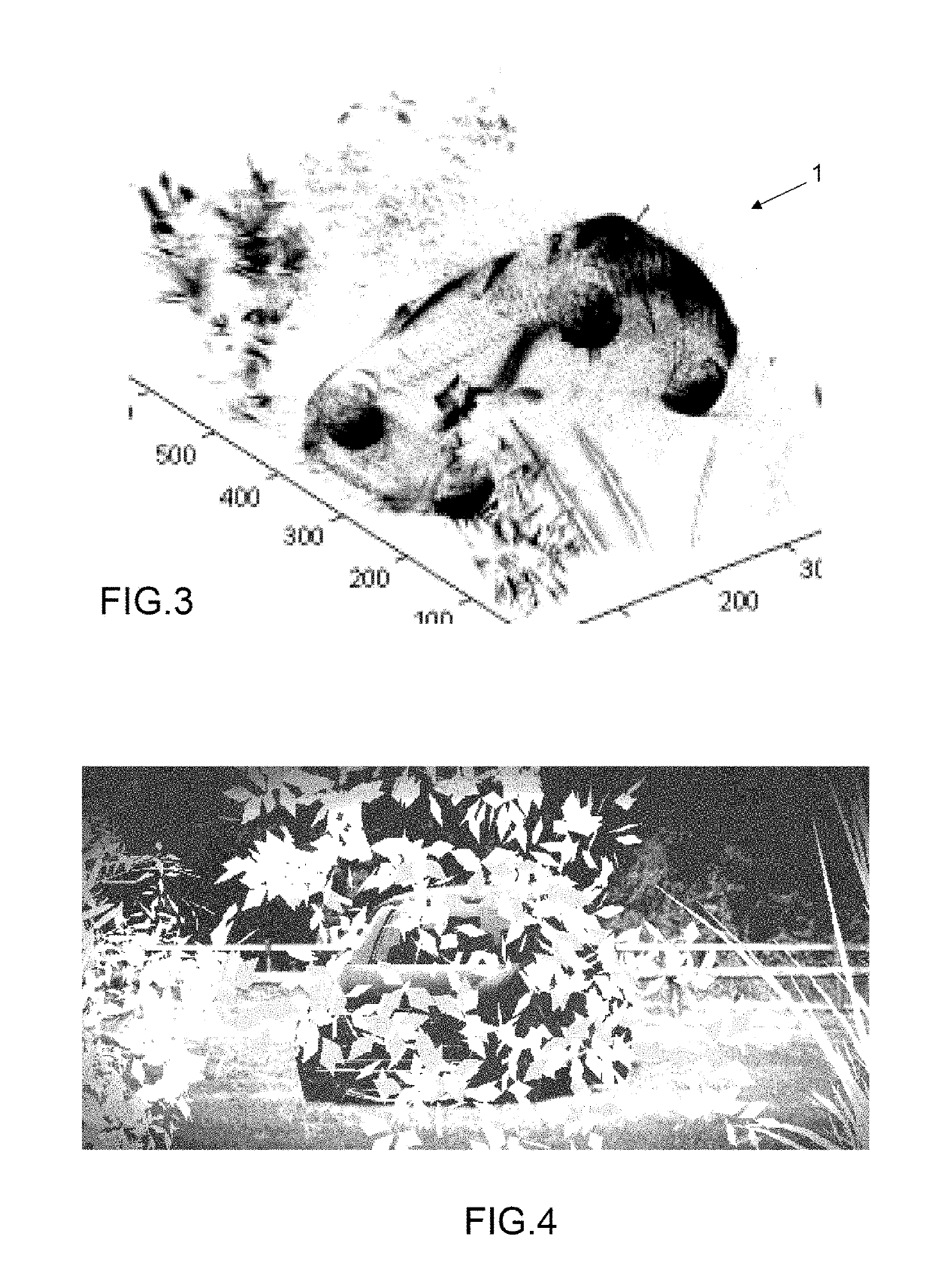Method for discrimination and identification of objects of a scene by 3-D imaging
a technology of 3d imaging and object identification, applied in the field of 3d imaging for object discrimination and identification of scenes, can solve the problems of difficult identification and discrimination of objects, techniques that do not make it possible to recover all three-dimensional voxels, and identification is limited to short distances, so as to achieve the effect of reducing these drawbacks
- Summary
- Abstract
- Description
- Claims
- Application Information
AI Technical Summary
Benefits of technology
Problems solved by technology
Method used
Image
Examples
Embodiment Construction
[0044]The method according to the invention is applied to a 3D voxel volume of a complex scene. This scene has therefore been previously transformed by 3D imaging into this 3D volume (1), an example of which is shown in FIG. 1.
[0045]This three-dimensional volume can be obtained using a method of reconstruction by transmission or by fluorescence (Optical Projection Tomography, nuclear imaging or X-Ray Computed Tomography) or by reflection (reflection of a laser wave or by solar reflection in the case of the visible band (between 0.4 μm and 0.7 μm) or near infrared (between 0.7 μm and 1 μm or SWIR between 1 μm and 3 μm) or by taking into account the thermal emission of the object (thermal imaging between 3 μm and 5 μm and between 8 μm and 12 μm), this three-dimensional reconstruction process is described in the patent “Optronic system and method for creating three-dimensional identification images” (U.S. Pat. No. 8,836,762, EP 2 333 481).
[0046]All the voxels obtained from a three-dime...
PUM
 Login to View More
Login to View More Abstract
Description
Claims
Application Information
 Login to View More
Login to View More - R&D
- Intellectual Property
- Life Sciences
- Materials
- Tech Scout
- Unparalleled Data Quality
- Higher Quality Content
- 60% Fewer Hallucinations
Browse by: Latest US Patents, China's latest patents, Technical Efficacy Thesaurus, Application Domain, Technology Topic, Popular Technical Reports.
© 2025 PatSnap. All rights reserved.Legal|Privacy policy|Modern Slavery Act Transparency Statement|Sitemap|About US| Contact US: help@patsnap.com



